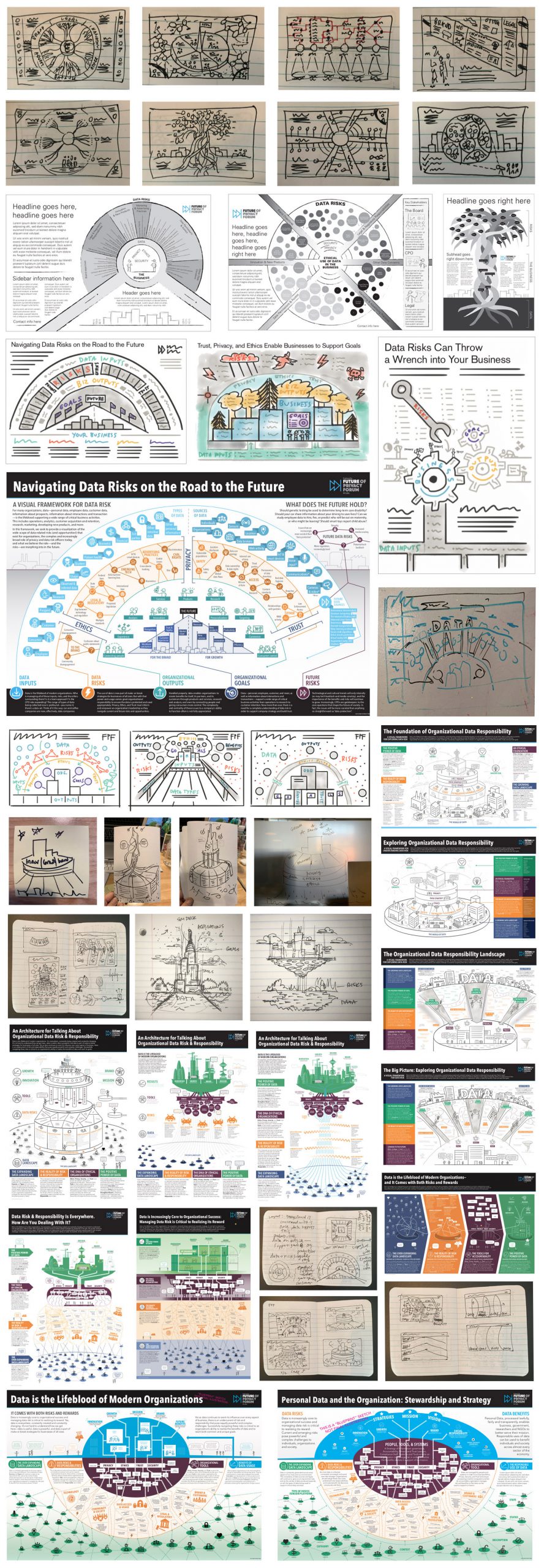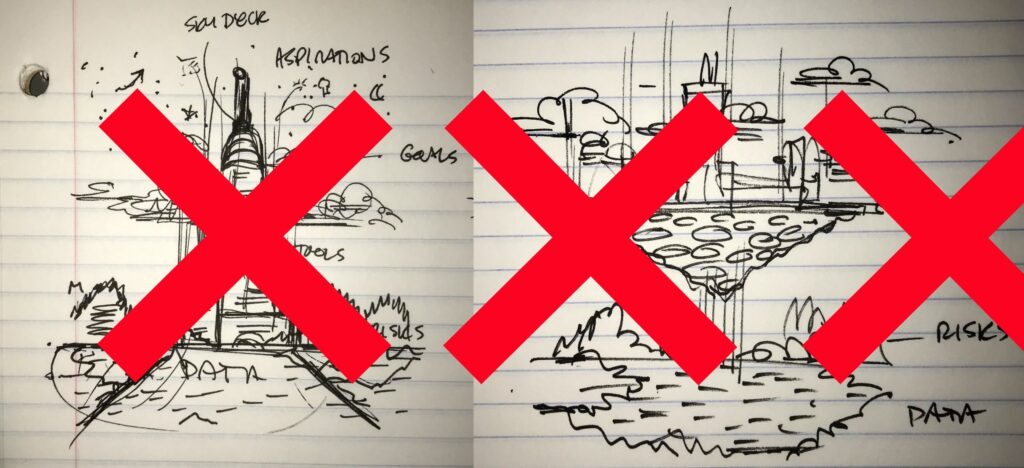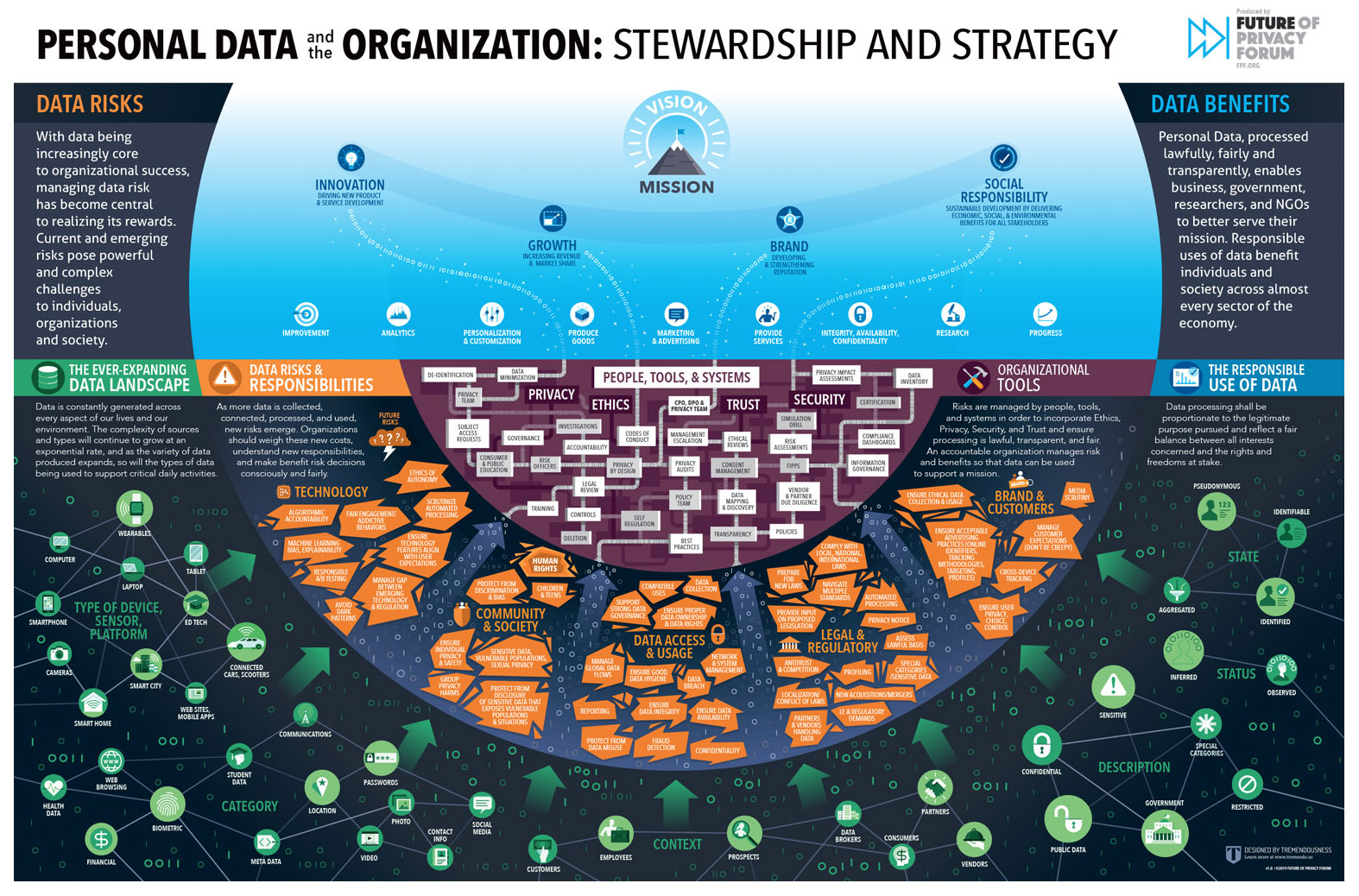Iteration, iteration, iteration… exultation!
“It is good to have an end to journey toward; but it is the journey that matters, in the end.”
—Ernest Hemingway
 Some infographic projects go so smoothly you wonder if you missed something.
Some infographic projects go so smoothly you wonder if you missed something.
There’s a great kickoff and conversation with the client. They share materials, you ask questions. We understand and they feel understood. Boom. You draw a bunch of Napkin sketches, narrow it down to three, show the client, they pick one. Boom. You move on to the Blueprint stage, write the text, make minor adjustments. Boom. You move on to the Illustration stage, make minor adjustments. Boom.
Done, and everyone’s happy. That’s as smooth as it gets.
But let’s be clear: even when things go this perfectly, it’s still a lot of work. Every visual storytelling project requires a good amount of reading, talking, sketching, thinking, sharing, and revising to even get to that handful of first-draft Napkin sketches. Then you have more of the same as you go through the rest of the process, or loop back to come up with new Napkins if the first round isn’t working.
This happened recently with one of our favorite clients. It took a lot more reading, talking, sketching, thinking, sharing, collaborating, and revising than usual to get to the right place. This was no one’s fault—on our side or theirs—and I don’t think the process failed us. Of course, with hindsight, there are always things you realize you could’ve done differently or better… but in this case I think it was just that the topic was incredibly complex, with multiple stakeholders, and a no-wiggle-room deadline.
The infographic‘s purpose was to show the lay of the land regarding the broad scope of data privacy risks that impact modern organizations, as well as convey the central role both personal and business data play in this ever-changing landscape.
With that in mind we’re sharing some of the quantity and evolution of sketches that led up to the final piece (ultimately successful in the client’s eyes): a 36×24″ poster that was given away at a Future of Privacy Forum conference earlier this year (see below). It’s not really important to see the detail of each concept, it’s more about the variety of fidelity and approach, as well as the overall progression.
From the start, we all knew that this was no ordinary infographic. It would be both dense and expansive, and needed to help make sense of a great deal of information—way more than usual. Information that had never been collected in one place before, let alone organized in a way that helped busy executives make sense of it.
We used various ways to communicate and iterate with the client on this project: there were in-person sessions, conference calls, and web meetings—sometimes with live sketching. All interactions were in the interest of determining the best way to help the team collaborate in order to get to the right idea.
The lesson here is not that it always takes a million calls or sketches to figure out the solution—it’s just that there are so many possibilities for how illustrative infographics can come to life. It’s a challenge to understand enough to get started. It’s a challenge to find those first possibilities. It’s a challenge to change them. It’s a challenge to come up with new ideas. It’s a challenge to combine them. It’s a challenge to discard them. It’s a challenge to make decisions and a challenge to make concessions. But these challenges are part of the journey—even on the “easy” projects.
Many of these sketches could have been fleshed out and been successful (and many might have looked good but performed poorly). In hindsight, some might have sucked. But as strategic communicators we must accept that the process of exploration is not always clean and linear. Sometimes it gets off track. Sometimes it loops back on itself. Sometimes it makes you feel lost.
When that happens, it’s good to step away and take a walk. Reach out and collaborate. Re-focus. Breathe. Then get back at it so that all those little failures can eventually lead you to a big, beautiful solution*.
*In this case the solution was, essentially, to turn an earlier concept upside down!

